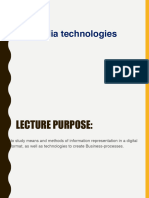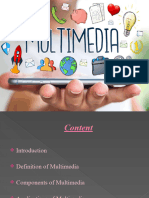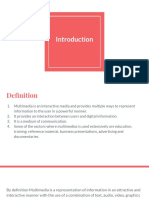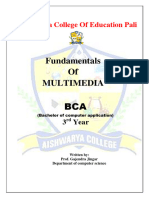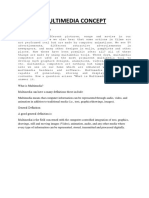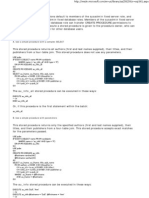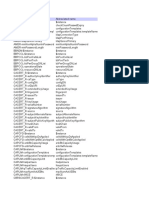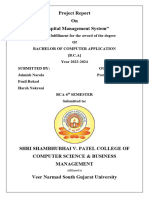Components of
Multimedia
�• Characters are used to form words,
phrases, and paragraphs in the text. 1. TEXT
Text appears in all multimedia
creations of some kind. The text can be
in a variety of fonts and sizes to
match the multimedia software’s
professional presentation. Text in
multimedia systems can communicate
specific information or serve as a
supplement to the information provided
by the other media.
�• Non-text information, such as a
sketch, chart, or photograph, is 2. GRAPHICS
represented digitally. Graphics add
to the appeal of the multimedia
application. In many circumstances,
people dislike reading large amounts
of material on computers. As a
result, pictures are more frequently
used than words to clarify concepts,
offer background information, and so
on.
� 2. GRAPHICS
• Graphics are at the heart of any multimedia presentation.
The use of visuals in multimedia enhances the
effectiveness and presentation of the concept. Windows
Picture, Internet Explorer, and similar programs are
often used to see visuals. Adobe Photoshop is a popular
graphics editing program that allows you to change
graphics and make them more effective and appealing
effortlessly.
�3. ANIMATIONS
• A sequence of still
photographs is being flipped
through. It’s a set of visuals
that give the impression of
movement. Animation is the
process of making a still
image appear to move. In
multimedia applications, the
animation is quite popular.
The following are some of the
most regularly used animation
viewing programs: Fax Viewer,
Internet Explorer, etc.
�� 4. VIDEO
• Photographic images that
appear to be in full motion
and are played back at
speeds of 15 to 30 frames
per second. The term video
refers to a moving image
that is accompanied by
sound, such as a television
picture. The following
programs are widely used to
view videos: Real Player,
Windows Media Player, etc.
� 5. AUDIO
• Any sound, whether it’s music,
conversation, or something else. Sound is
the most serious aspect of multimedia,
delivering the joy of music, special
effects, and other forms of
entertainment. Decibels are a unit of
measurement for volume and sound pressure
level. Audio files are used as part of
the application context as well as to
enhance interaction.
�CHARACTERISTICS
OF MULTIMEDIA
�A multimedia system has four basic
characteristics:
1. Multimedia systems must be computer-
controlled.
2. Multimedia systems are integrated.
3. The information they handle must be
represented digitally.
4. The interface to the final presentation of media
is usually interactive.
� Computer Controlled
• Producing the content of the information e.g., by using the
authoring tools, image editor, sound and video editor.
• Storing the information: providing large and shared capacity
for multimedia information.
• Transmitting the information: through the network.
• Presenting the information to the end user: directly use
computer peripherals such as a display device (monitor) or
sound generator (speaker).
� Integrated
• All multimedia components (audio, video, text, graphics)
used in the system must be somehow integrated.
• Every device such as a microphone and camera is
connected to and controlled by a single computer
• A single type of digital storage is used for all media types.
• Video sequences are shown on the computer screen instead
of a TV monitor.
� Interactivity
Level 1: Interactivity strictly on information delivery. Users
select the time at which the presentation starts, the order, the
speed, and the form of the presentation itself.
Level 2: Users can modify or enrich the content of the
information, and this modification is recorded.
Level 3: Actual processing of user input and the computer
generates a genuine result based on the users’ input.
� Interactivity
Level 1: Interactivity strictly on information delivery. Users
select the time at which the presentation starts, the order, the
speed, and the form of the presentation itself.
Level 2: Users can modify or enrich the content of the
information, and this modification is recorded.
Level 3: Actual processing of user input and the computer
generates a genuine result based on the users’ input.
�Elements of
Multimedia
��1. Text
• Text is the basic element of multimedia. It involves using text
types, sizes, colors, and background colors.
• In multimedia, the text is mostly used for titles, headlines,
menus, paragraphs, lists, etc.
• In a multimedia application, other media or screens can be
linked through text. This is what you call Hypertext.
• The most used software for viewing text files are Microsoft
Word, Notepad, Word pad, etc. Mostly the text files are
formatted with, DOC, TXT, etc extension.
� 2. Graphics
- It is a digital representation of non-text
information, such as a drawing, chart, or
photograph.
- Graphics make the multimedia application
attractive. They help to illustrate ideas through
still pictures.
�•There are two types of
graphics used: bitmaps
(paint graphics) and
vectors (draw graphics).
�•Bitmaps graphics also called raster
graphics. A bitmap represents the
images as an array of dots called
pixels. Bitmap graphics are
resolution-dependent and generate
large file sizes.
�•Vectors graphics are images
drawn on the computer with
software that uses geometrical
formulas to represent images
and only requires a small
amount of memory.
�� 3. Video
• Video is the technology of electronically
capturing, recording, processing, storing,
transmitting, and reconstructing a sequence
of still images representing scenes in
motion.
• Photographic images that are played back
at speeds of 15 to 30 frames a second and
provide the appearance of full motion.
� 4. Audio
• In multimedia audio means related to
recording, playing, etc.
• Audio is an important component of
multimedia because this component
increases the understandability and
improves the clarity of the concept.
• Audio includes speech, music, or any
other sound.
� 5. Animation
• Animation is the rapid display of a sequence of
images of 2-D artwork or model positions to
create an illusion of movement.
• It is an optical illusion of motion due to the
phenomenon of persistence of vision and can be
created and demonstrated in several ways.
• Entertainment multimedia titles in general, and
children’s titles specifically, rely heavily on
animation.
�� Reflect upon!
1.What do you think are the
advantages of creating and
saving your documents
online?
2.What are the advantages of
sharing what Google
integrated into these
productivity tools?





